
-
Find the right food for your petTake this quiz to see which food may be the best for your furry friend.Find the right food for your petTake this quiz to see which food may be the best for your furry friend.Featured products
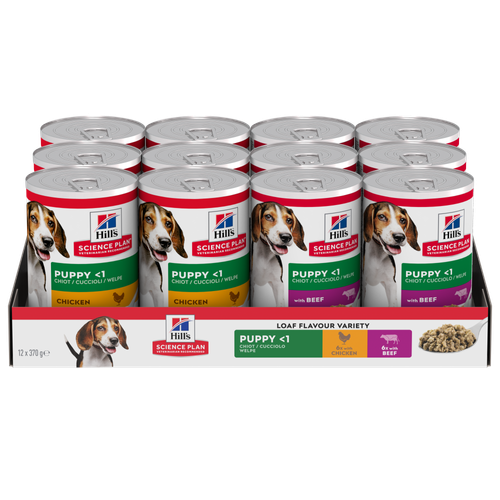 Puppy Food
Puppy FoodHill's Science Plan Puppy Multipack Wet Dog Food with Chicken & Beef are complete premium pet foods for growing puppies from weaning until 1 year old and for pregnant and nursing dogs. Your puppy will love these deliciously smooth and savoury minced loaves, formulated for balanced nutrition and overall health.
Shop Now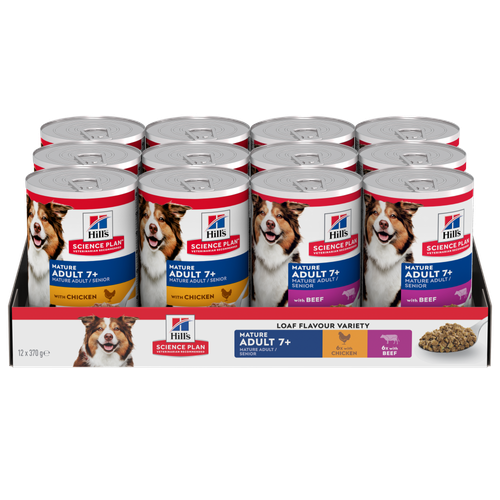 Mature Adult Dog Food
Mature Adult Dog FoodHill's Science Plan Mature Adult Multipack Wet Dog Food with Chicken & Beef are complete premium pet foods for mature adult dogs from 7 years. Your dog will love these deliciously smooth and savoury minced loaves, formulated to deliver the appropriate amount of energy to support the needs of adult dogs.
Shop Now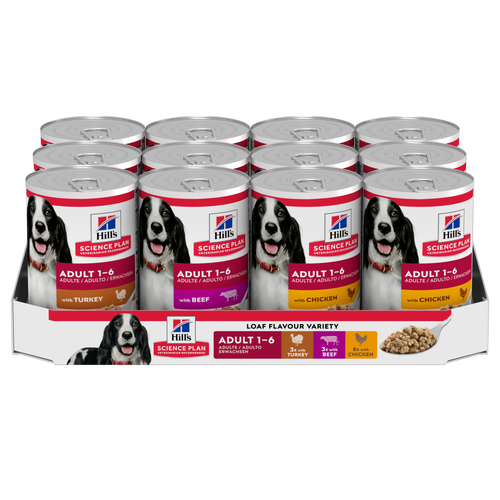 Adult Wet Dog Food with Beef
Adult Wet Dog Food with BeefHill's Science Plan Adult Multipack Wet Dog Food with Chicken, Beef & Turkey are complete premium pet foods for adult dogs from 1 year. Your dog will love these deliciously smooth and savoury minced loaves, formulated for balanced nutrition and overall health.
Shop NowFeatured products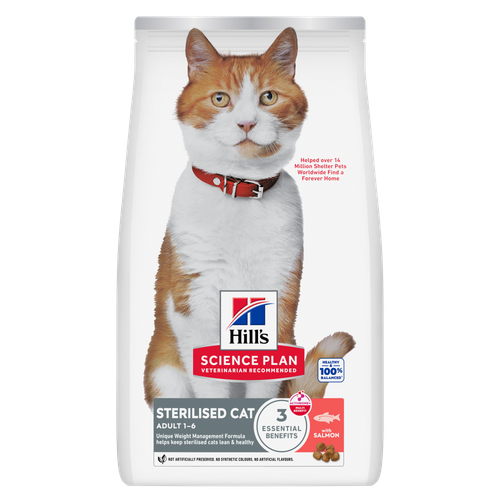 Sterilised Adult Cat Food
Sterilised Adult Cat FoodHill's Science Plan Adult Sterilised Cat Dry Food with Salmon is specially formulated with ActivBiome+ Multi-Benefit Technology. It is a precisely balanced nutrition, tailored to meet the needs of sterilised cats, to help keep them lean & healthy.
Shop Now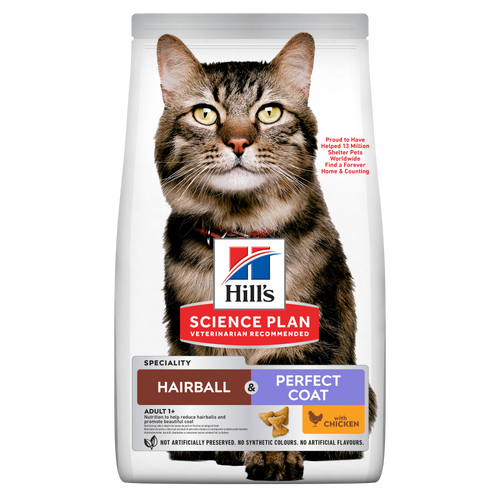 Hairball & Perfect Coat Adult Dry Cat Food with Chicken
Hairball & Perfect Coat Adult Dry Cat Food with ChickenHill's Science Plan Hairball & Perfect Coat Adult Cat Food with Chicken is formulated to effectively help avoid hairball formation in adult cats while promoting a beautiful coat. Thanks to its mix of essential omega-6 fatty acids, this food benefits the cat's skin and fur, keeping them healthy and shiny. Our Advanced Fibre Technology helps reduce hairballs by naturally promoting their passage through the gut. This food is formulated with high-quality protein for a perfectly balanced, great-tasting recipe.
Shop Now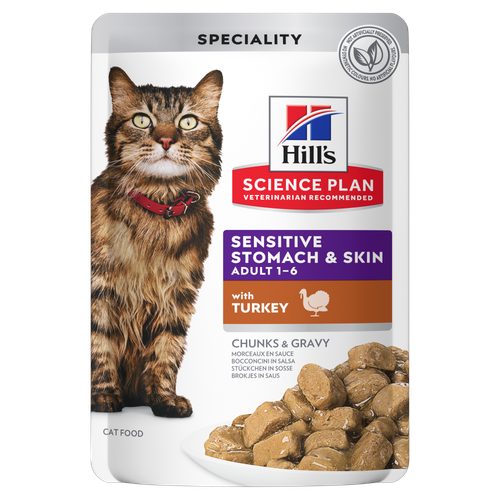 Sensitive Stomach & Skin Adult Cat Food
Sensitive Stomach & Skin Adult Cat FoodHill's Science Plan Sensitive Stomach & Skin Adult Wet Cat Food with Turkey is a complete pet food for adult cats, aged 1–6 years. This highly digestible wet food comes in a pouch and supports healthy digestion, as well as nourishes skin and promotes a thick and lustrous coat.
Shop Now -
Dog
- Dog Tips & Articles
-
Health Category
- Weight
- Food & Environmental Sensitivities
- Urinary
- Digestive
- Joint
- Kidney
-
Life Stage
- Puppy Nutrition
- Adult Nutrition
- Senior Nutrition
Cat- Cat Tips & Articles
-
Health Category
- Weight
- Skin & Food Sensitivities
- Urinary
- Digestive
- Kidney
-
Life Stage
- Kitten Nutrition
- Adult Nutrition
Featured articles The Incredible Science Behind Your Pet's Microbiome
The Incredible Science Behind Your Pet's MicrobiomeLearn what your pet's microbiome is, how it contributes to your pet's gut and overall health, and why nutrition is important in maintaining healthy microbiomes.
Read More Show some love with wet foods: a great choice for pets with health issues
Show some love with wet foods: a great choice for pets with health issuesShow some love with wet foods: a great choice for pets with health issues.
Read More The Right Diet For Your Pet
The Right Diet For Your PetIn people, the right diet is very important. If you are eating the wrong way for your metabolism, activity level, age and lifestyle you could end up with health issues.
Read More -


When you hear people talk about neutering cats and dogs there are lots of things that can worry owners. You may have heard that neutering cats and dogs causes changes in behaviour, makes them fat, might change their fur or even cause incontinence. So let’s have a look at these things and see if they really are a problem or not.
Behaviour
I once had a client who was dragged into my consult room by her huge, un-castrated boxer. The dog sniffed my nether regions, urinated all over my room and was totally out of control. I asked her if she’d ever considered castration and she said, “Oh, but we wouldn’t want to change his character”! So what behaviour changes can we see?
Male and female cats and dogs are likely to be less aggressive after neutering.
Male animals in particular are much less likely to roam in search of a mate so are more homely. This also means they are less likely to get injured or, particularly in the case of cats, spread diseases.
Male cats and dogs that are not castrated will urinate in lots of places to mark their territory. This may be unwanted if it’s in your house or other people’s.
I think you’ll agree that these changes in behaviour are probably all pretty welcome!


Tasty Tips
Young pets may need several visits in their first year for vaccinations. Adult pets generally benefit from annual check-ups, while senior or special-needs pets might require more frequent visits.
Weight gain and obesity
The change in hormone levels after neutering makes the metabolism slow down slightly. This means that bodies burn fewer calories so indeed pets can gain weight if we’re not careful. BUT, the great news is that this isn’t anything to worry about. Here are some tips for how to avoid it.
Regular weight checks. Neutering usually happens around 4-6 months of age. As your pets are growing it’s essential to have them weighed regularly. You can track their growth and also your vet can make sure they are a healthy, slim weight. Knowing they are their ideal weight before neutering puts you ahead of the game.
Remember your pet will gain weight after neutering if they are still growing. Ask your vet to show you how to check body condition score (BCS). This will help you see if their weight gain is healthy.
Be ready to change their food. It can be dangerous to simply reduce rations of food because you could underfeed protein, vitamins and minerals. Your pet will also feel hungry and be more likely to beg or steal food. Talk to your vet about a lower energy, bulkier food like a neutered cat or dog food. Don’t change without talking to a vet because if your pet is growing you need to make sure they have grown enough to change food.
Splitting your pet’s ration into smaller, more frequent meals can help them feel fuller through the day. 3-4 meals for dogs and up to 6-8 meals for cats are ideal. Timer feeders are a great way to do this if you’re out at work. Wet food has a higher water content than dry food so may help your animal feel fuller. Try wet foods or see if your pet will eat their kibble with added water. This can help keep them satisfied.
Coat and fur changes
Some owners really worry about this. It’s actually pretty rare to see coat changes after neutering. Some spaniel breeds in particular seem to become a bit fluffier. Some light-coloured cats like the Siamese may grow dark fur in the patch where they are clipped for the operation. These changes are rare, are only aesthetic and pose no problem at all for the cat or dog.
Incontinence
Female hormones help keep the bladder toned and working in dogs. Because neutering removes the hormones we sometimes see urinary incontinence later in life. This usually shows itself as leakage of urine when the dogs are asleep or as they change position. It only affects about 5% of female dogs and tends to be worse in larger, chubbier or older animals. There are medicines available that can really help and I feel that the decrease in cancer risk with neutering still makes it worthwhile.
As an owner myself as well as a vet, I feel that the health benefits of neutering far outweigh these minor worries. You can read more about those health benefits in our articles on dog and cat neutering.


One of our staff authors prepared this article for you
Related products
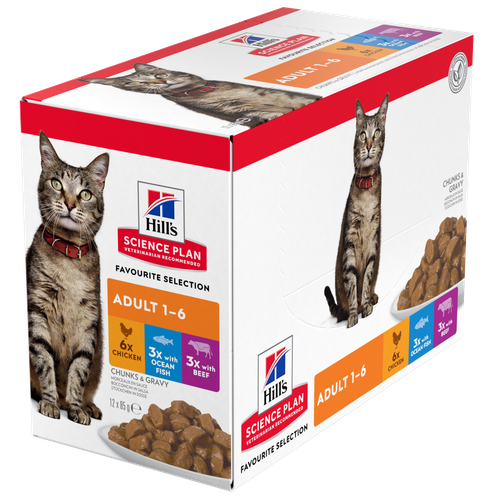
Tender chunks in gravy for cats, with high-quality protein to maintain lean muscle. With vitamin E and omega-3s & -6s for healthy skin and balanced minerals to support healthy vital organs.
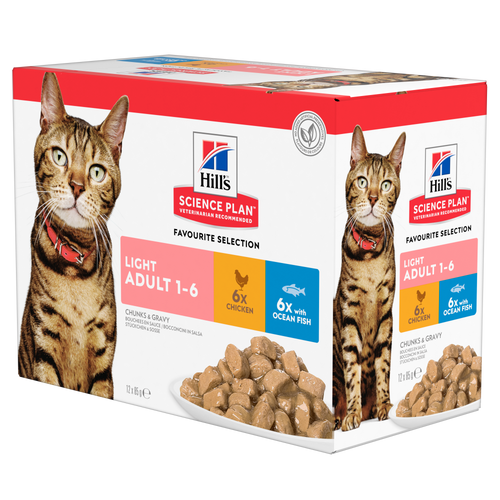
Tender chicken chunks in gravy for cats, with L-carnitine and fewer calories for ideal weight management. Packed with high-quality protein, omega-6s, and vitamin E for shiny fur and healthy skin.
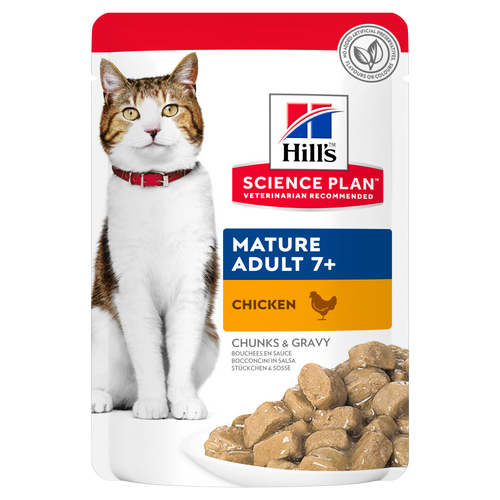
Tender chicken chunks in gravy for mature adult cats. Made with easy-to-digest ingredients, high-quality protein for lean muscle maintenance and antioxidant vitamins C+E for optimal health.
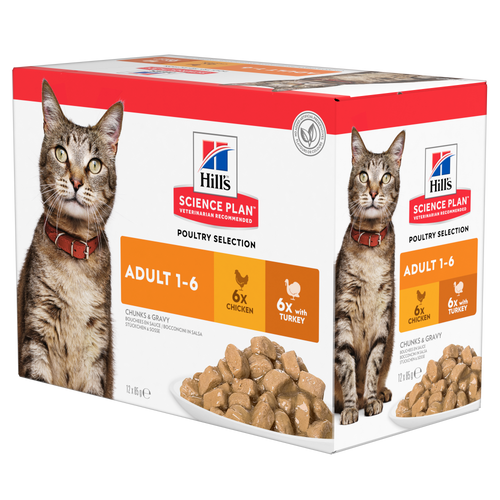
Related articles

To make a protein, amino acids are linked together in a long chain. The chain is then bundled into to a three-dimensional structure, like a tangled ball of yarn.

In people, the right diet is very important. If you are eating the wrong way for your metabolism, activity level, age and lifestyle you could end up with health issues.

Learn what your pet's microbiome is, how it contributes to your pet's gut and overall health, and why nutrition is important in maintaining healthy microbiomes.

Show some love with wet foods: a great choice for pets with health issues.

Put your pet on a diet without them knowing
Our low calorie formula helps you control your pet's weight. It's packed with high-quality protein for building lean muscles, and made with purposeful ingredients for a flavourful, nutritious meal. Clinically proven antioxidants, Vitamin C+E, help promote a healthy immune system.
Put your pet on a diet without them knowing
Our low calorie formula helps you control your pet's weight. It's packed with high-quality protein for building lean muscles, and made with purposeful ingredients for a flavourful, nutritious meal. Clinically proven antioxidants, Vitamin C+E, help promote a healthy immune system.

